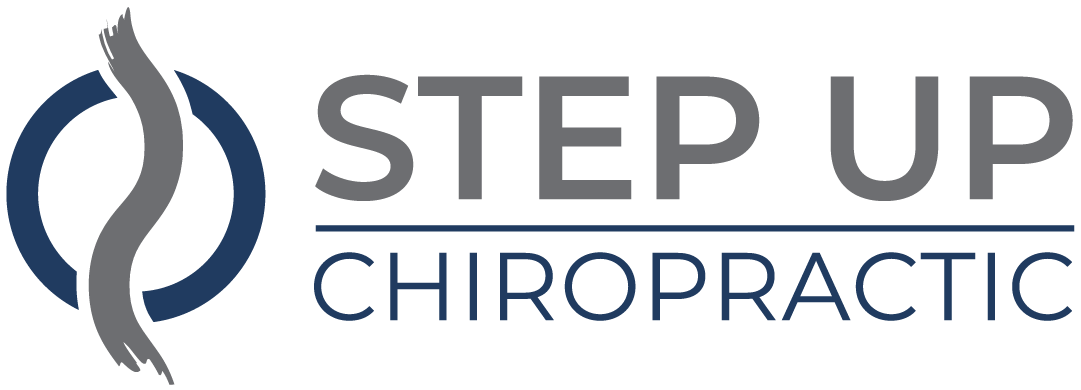As a local chiropractor, I understand how challenging it can be to cope with a neck injury. It can really disrupt your daily routine and affect your overall quality of life. Fortunately, there are several effective techniques that I recommend to help alleviate your discomfort and support your healing journey.
Gentle stretching exercises can be particularly beneficial, as they enhance flexibility and promote circulation to the affected area. Additionally, utilizing heat and cold therapies can significantly help in managing pain and reducing inflammation. Each of these methods offers unique advantages, and it's important to apply them correctly for the best results.
If you're curious about which techniques may work best for you, I'm here to guide you through them. Together, we can explore these soothing methods in greater detail to create a personalized approach to your recovery. Your well-being is our priority, and I'm excited to help you on your path to healing.
Gentle Stretching Exercises
As a local chiropractor, I often see patients struggling with neck pain and tightness. One of the most effective ways to alleviate discomfort and enhance flexibility is through gentle stretching exercises. If you're not familiar with chiropractic care, incorporating these stretches into your daily routine can make a significant difference in your overall well-being.
Let's start with a simple yet effective stretch: side-to-side head tilts. When you feel tightness in your neck, gently tilt your head to one side, holding it for about 15 to 30 seconds before switching to the other side. This stretch helps target the muscles on the sides of your neck, promoting relaxation and reducing tension.
Another beneficial exercise is the chin tuck. Whether you're sitting or standing, align your posture and gently tuck your chin toward your chest, creating a double chin effect. Hold this position for about 5 seconds, and then relax. This movement not only strengthens your neck muscles but also aids in improving your posture, which is crucial for preventing future neck pain.
In addition, I recommend incorporating shoulder rolls into your routine. Start by rolling your shoulders forward in a circular motion for about 10 repetitions, then switch directions. This exercise helps to relieve tension in the upper back and neck area, which can often be a source of discomfort.
Don't overlook the doorway stretch, either. Stand in a doorway, place your forearms on the door frame, and gently lean forward. You'll feel a satisfying stretch across your chest and the front of your shoulders – this is particularly helpful for alleviating neck strain that can arise from poor posture.
As you begin these stretches, it's important to listen to your body. If any movements cause pain, please avoid them.
Consistency is key; aim to integrate these gentle stretches into your daily routine for the best results. Remember, your body is capable of healing itself, and with the right support and care, you can find relief from neck pain naturally.
Heat Therapy Application
As a local chiropractor, I want to share how heat therapy can significantly alleviate neck pain and enhance your overall well-being.
Utilizing heat can offer comfort and boost circulation, which is essential for healing. There are various methods for applying heat, including warm towels and electric heating pads, each with unique advantages.
In this guide, we'll explore the most effective techniques for applying heat to ensure you experience the maximum relief from your discomfort.
Understanding these methods is an important step in your journey toward natural healing and improved spinal health.
Benefits of Heat Therapy
As a local chiropractor, I want to share with you the incredible benefits of heat therapy, especially when it comes to addressing neck injuries. Many of my patients are often surprised to learn how effective heat can be for relief and recovery.
When you apply heat to an injured neck, it increases blood flow to that area, which is essential for promoting faster healing. The warmth penetrates your muscles, helping to relax any tightness and reduce stiffness. This can make movement not only easier but also significantly less painful.
Moreover, heat therapy is particularly effective in soothing nerve endings, which can diminish the perception of pain. This is especially helpful if you're dealing with muscle spasms or chronic discomfort. As the heat works its magic, you may find that your neck becomes more flexible, allowing for a greater range of motion.
An added bonus is that the warmth can trigger the release of endorphins—your body's natural painkillers. This not only alleviates physical discomfort but can also uplift your mood during the healing journey.
Incorporating heat therapy into your recovery routine can be a straightforward and effective approach to support your healing process. Just remember to practice safety by avoiding prolonged exposure to prevent burns.
Embrace the therapeutic benefits of heat and take a proactive step toward feeling better—your body will thank you for it!
Types of Heat Sources
As a chiropractor dedicated to your well-being, I want to share some effective heat sources that can aid in relieving neck injuries. Understanding these options can enhance your recovery process and promote natural healing.
One of the most popular choices is a heating pad. It delivers consistent warmth that can be adjusted to suit your comfort level, making it easy to use whether you're sitting or lying down. This targeted relief can help alleviate tension and pain in your neck.
Another excellent option is a hot water bottle. This traditional method not only warms your neck but also encourages blood flow, which is crucial for healing. Simply fill it with warm water, wrap it in a towel, and place it on the affected area for soothing relief.
You might also find comfort in using a warm, damp towel. By heating a towel in the microwave for a brief period, you can create a gentle compress that helps ease tension and discomfort in your neck.
For a more indulgent experience, consider investing in a heated neck wrap or a microwaveable rice bag. These products are designed to conform to your neck, providing gentle heat that promotes relaxation and aids in muscle recovery.
Lastly, don't underestimate the benefits of a warm shower or bath. The combination of steam and heat can effectively soothe your muscles and help reduce stiffness.
Each of these heat sources offers unique benefits for neck injury relief, so I encourage you to explore them and choose the one that resonates with you.
Recommended Application Methods
As a local chiropractor, I want to share some effective ways to use heat therapy for relieving neck pain, especially if you're new to chiropractic care and natural healing.
First, it's essential to select the right heat source that suits your needs. A heating pad or a warm towel can provide targeted relief for your neck. If you're looking for a more soothing experience, a warm shower or bath can be incredibly beneficial, allowing the heat to envelop your neck comfortably.
Once you've chosen your heat source, ensure it's at a safe and comfortable temperature. It's important to avoid excessive heat, as it can lead to burns or skin irritation. I recommend applying the heat to your neck for about 15 to 20 minutes. This duration allows your muscles to relax effectively.
You can repeat this process several times throughout the day, particularly after long periods of sitting or standing, as this can often contribute to neck discomfort.
If you're using a heating pad, please be sure to follow the manufacturer's safety instructions. For a warm towel, wring it out to eliminate any excess moisture before placing it directly on your skin.
To enhance the benefits of heat therapy, consider combining it with gentle stretches. This approach can further promote muscle relaxation and improve your overall comfort.
Always pay attention to how your body responds to the heat. If at any point the sensation becomes uncomfortable or painful, it's essential to remove the heat immediately.
Cold Compress Usage
As a local chiropractor, I often see patients struggling with neck pain, and I want to share an effective technique that can make a significant difference in your comfort and recovery: the use of a cold compress.
This simple, natural remedy can help reduce swelling and numb any sharp discomfort you might be experiencing.
To ensure you get the most benefit from a cold compress, it's essential to know how to apply it correctly. Start by wrapping some ice or a cold pack in a thin cloth to protect your skin.
Place it gently on the affected area of your neck. I recommend applying it for about 15-20 minutes at a time, allowing your skin to return to normal temperature between sessions. You can repeat this process every hour as needed, especially during the first couple of days after experiencing pain.
Incorporating cold compress therapy into your routine can be a fantastic first step in your healing journey.
If you're curious about how chiropractic care can further support your recovery, please don't hesitate to reach out—I'm here to help you on your path to wellness!
Benefits of Cold Compress
As a local chiropractor, I want to share with you the benefits of using a cold compress for neck injuries. Cold compresses are a straightforward yet powerful tool to help relieve pain and reduce inflammation. When you apply a cold compress to your neck, it works by constricting blood vessels, which not only helps to minimize swelling but also numbs sharp pain. This immediate relief can greatly enhance your comfort as you navigate through recovery.
Moreover, using a cold compress can be particularly effective in reducing muscle spasms. If you're experiencing tension or strain in your neck, the cold can provide soothing relief to those irritated muscles, allowing for greater mobility. Additionally, the refreshing sensation can serve as a mental break, helping you feel more at ease during your healing process.
One of the great advantages of cold compresses is their simplicity and ease of use. You can purchase ice packs or even create your own by wrapping frozen vegetables in a cloth. This means that you can quickly address pain as it arises, promoting a proactive approach to your healing journey.
Application Techniques Explained
As a local chiropractor, I want to share with you the importance of effectively using a cold compress, especially if you're experiencing pain or discomfort. This simple technique can significantly enhance your recovery and provide relief.
To begin, choose a suitable cold compress. Options like a gel pack or even a bag of frozen peas wrapped in a towel work wonderfully. The towel is crucial as it protects your skin from frostbite. Before you apply the compress, ensure that the area of your neck is clean and dry to maximize its effectiveness.
When you're ready, place the cold compress directly on the affected area. It's important to avoid pressing down too hard—gentle, soothing contact is what you're after. If needed, you can secure it in place with a soft cloth, making sure you feel comfortable throughout the process.
Feel free to gently move your head to find the angle that provides the best relief, but remember, don't push yourself too far.
If you're using an ice pack, I recommend keeping it on for about 10 to 15 minutes at a time. This duration is ideal for reducing swelling and numbing pain effectively. Pay close attention to how your body responds; if you experience any discomfort, remove the compress right away.
Always listen to your body—if it feels too cold, take a break.
Incorporating these techniques into your routine can greatly aid in your healing journey, and as your chiropractor, I'm here to support you every step of the way.
Duration and Frequency Guidelines
As a local Chiropractor, I want to share some valuable guidance on using a cold compress to help alleviate neck pain and inflammation. For optimal benefits, I recommend applying a cold compress for 10 to 15 minutes every hour, as needed. This approach is effective in reducing inflammation and numbing discomfort in the neck area.
It's crucial to pay attention to how your body responds during this process. If you start to feel any discomfort or notice that your skin is getting too cold, please remove the compress immediately. This will help prevent any risks of frostbite or skin irritation.
Listening to your body is key. If your symptoms persist or even worsen despite using the cold compress, I encourage you to reach out for a professional assessment. As a chiropractor, I can provide tailored advice based on your specific situation and overall health.
While you're applying the cold compress, it's beneficial to keep your neck and the surrounding area as still as possible. Movement can often intensify pain and inflammation, so finding a comfortable position to relax in is important.
If you're using a commercial cold pack, always remember to wrap it in a thin cloth before applying it to your skin. This extra step helps to protect your skin while you work towards relief.
Massage Techniques
As a local chiropractor, I often see patients struggling with neck injuries, and I want to share how massage techniques can be a valuable part of your recovery journey.
These methods can significantly alleviate discomfort by reducing muscle tension, enhancing circulation, and promoting overall relaxation in the affected area. You don't need to be a massage expert to implement some simple techniques at home.
Begin with gentle kneading of the muscles around your neck using your fingers. Apply a moderate amount of pressure, paying close attention to any knots or tight spots that may be causing discomfort.
You can use your fingers, palms, or thumbs for deeper pressure, and try making small circular motions to help release tension effectively.
Another technique to explore is effleurage, which consists of long, sweeping strokes along your neck and shoulder area. This method can boost blood flow and provide a calming sensation.
You might also alternate this with gentle tapping or percussion using your fingertips, as this can further stimulate the muscles.
If you're comfortable with it, incorporating heat therapy can be beneficial. Applying a warm compress before or during your massage can enhance relaxation and help your muscles become more supple.
Just be sure to check the temperature to avoid any burns.
After your massage, I recommend including some gentle neck stretches. These can complement the massage and further relieve discomfort.
Remember, it's crucial to listen to your body throughout this process. If you experience any sharp pain or discomfort during these techniques, please stop immediately and consult with a healthcare professional.
With consistent practice, these massage techniques can play a significant role in your healing process.
As your chiropractor, I encourage you to explore these methods as part of a holistic approach to your recovery.
Posture Correction
As a chiropractor, I want to emphasize the critical importance of posture in maintaining your neck health. Many patients don't realize that correcting their posture can significantly alleviate discomfort caused by injuries or everyday strain. When you practice good posture, you help distribute weight evenly across your spine, which reduces unnecessary tension in your neck muscles.
Here are some practical tips I often share with patients to help improve their posture throughout the day:
- Relax your shoulders: Imagine them hanging down naturally instead of being hunched up towards your ears.
- Balance your head: Think of it as a perfectly stacked pillar on top of your spine, ensuring it remains aligned with your body.
- Ground your feet: Position them shoulder-width apart to create a stable base that supports your entire structure.
- Adjust your screen height: Make sure your eyes are level with the top of your monitor to avoid leaning forward, which can strain your neck.
Start by being conscious of your posture in daily activities. When sitting, ensure your back is straight, your feet are flat on the floor, and your knees form a right angle.
For those working at desks, consider investing in ergonomic furniture that supports your natural alignment. When standing, engage your core muscles and avoid locking your knees to maintain a balanced stance.
In addition to these posture tips, incorporating simple stretches and exercises can reinforce healthy habits. Remember, improving your posture is a gradual process that requires patience and practice.
However, the relief you'll experience in your neck can be incredibly rewarding. With dedication, you can cultivate a healthier, more comfortable posture that enhances your overall well-being. If you have any questions or need personalized guidance, don't hesitate to reach out for support in your journey to better health!
Mindfulness and Relaxation
As a local chiropractor, I want to share some valuable insights into how you can relieve neck injuries and promote overall wellness. One important aspect of healing is maintaining good posture, but it doesn't stop there. Incorporating mindfulness and relaxation techniques can significantly enhance your recovery process.
By practicing mindfulness, you become more attuned to your body and the sensations you're experiencing, which allows you to better address any tension or discomfort in your neck. I encourage you to set aside a few minutes each day to focus on your breathing. Start by inhaling deeply through your nose, allowing your abdomen to expand fully. Then, exhale slowly through your mouth, consciously releasing any built-up tension. This simple practice can create a sense of calm and help alleviate discomfort.
Another effective technique is progressive muscle relaxation. This involves tensing the muscles in your neck and shoulders for a few seconds, then completely letting go. Pay attention to how much more relaxed your neck feels once you release that tension. I recommend repeating this exercise throughout the day, especially when you start to feel stiffness.
In addition to these mindfulness practices, incorporating gentle stretches into your daily routine can further promote relaxation and healing. Simple movements, such as tilting your head from side to side or rolling your shoulders back and forth, can help to release tightness and improve blood circulation in the neck area.
Lastly, consider exploring guided meditation or mindfulness apps. These tools can offer structured exercises designed to help you relax and cultivate greater awareness, making it easier for you to let go of stress that may be contributing to your neck pain.
At our chiropractic practice, we believe in a holistic approach to health, and utilizing mindfulness and relaxation techniques can be an essential part of your healing journey. If you have any questions or would like to learn more, feel free to reach out!
Proper Sleep Positions
As a chiropractor, I often emphasize the importance of proper sleep positions in achieving a restful night's sleep while also protecting your neck. The way you position yourself during sleep can significantly influence your neck health and overall comfort. By adopting the right sleep positions, you can support your body's natural alignment and promote recovery.
Let's start with the back sleeping position. This is one of the best positions for spinal alignment, as it allows your weight to be distributed evenly across your body. When sleeping on your back, it's crucial to use a supportive pillow that cradles your neck without elevating your head too much. This will help maintain the natural curvature of your spine and reduce any potential discomfort.
If you prefer to sleep on your side, it's essential to select a firmer pillow that fills the gap between your shoulder and neck. This ensures that your spine remains aligned and can help prevent neck strain.
Here are some helpful tips for ideal sleep positions:
- Back sleeping: Imagine a gentle, supportive pillow cradling your neck, allowing your head to rest comfortably in line with your spine. This position promotes optimal alignment and can help alleviate pressure on your neck.
- Side sleeping: Picture a plush, contouring pillow that supports your head while maintaining the natural curve of your neck. This can greatly reduce the risk of waking up with discomfort.
- Avoid stomach sleeping: Consider the strain this position places on your neck, as it often requires twisting and turning to breathe comfortably. Over time, this can lead to unnecessary pain and discomfort.
- Pillow adjustments: Think about the benefits of using additional pillows—placing one under your knees when sleeping on your back can relieve pressure on your spine, while placing a pillow between your legs when on your side can help maintain hip alignment.
Conclusion
As your local chiropractor, I'm here to help you understand how to effectively manage neck injuries and promote lasting relief through natural healing techniques. By incorporating these seven soothing methods into your daily routine, you can alleviate discomfort and support your neck health.
First, gentle stretching is essential for easing muscle tension and improving flexibility. Heat therapy can also work wonders, as it helps to relax tight muscles and increase blood flow to the affected area. On the other hand, cold compresses are great for reducing inflammation and numbing pain.
Don't underestimate the power of massage! It can significantly relieve tension and promote relaxation in your neck muscles. Additionally, posture correction plays a crucial role in your overall well-being; maintaining proper posture can help prevent further injury and discomfort.
Mindfulness practices, such as meditation or deep breathing, can enhance your body's natural healing process by reducing stress and promoting relaxation. Lastly, it's vital to pay attention to your sleep positions—using pillows that properly support your neck can make a big difference in your recovery.
I encourage you to start integrating these techniques into your routine today. You'll likely notice a significant improvement in your neck health and overall quality of life! If you have any questions or need further guidance, feel free to reach out.




